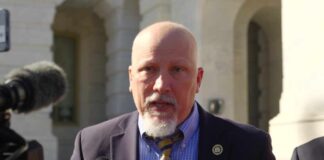
As the heavy equipment was preparing to remove the Civil War Reconciliation Monument at Arlington National Cemetery, a federal judge stepped in on Monday to temporarily block the federal government’s actions until a full hearing is conducted. The underlying lawsuit was brought by the public interest group Defend Arlington, whose mission is to defend the monument’s cultural and historical significance.
U.S. District Judge Rossie Alston, Jr., signed the order, placing a temporary injunction until late on Wednesday after a hearing that has been scheduled to allow both sides to present their arguments to the court. Alston was nominated as a district judge in the Eastern District of Virginia by President Donald Trump in 2018. He was approved by a 75-20 vote in the Senate in 2019.
BREAKING: Trump-appointed Judge Rossie Alston has issued a temporary restraining order halting the removal of the Reconciliation Monument at Arlington National Cemetery. pic.twitter.com/7AyGspadZs
— Rep. Andrew Clyde (@Rep_Clyde) December 18, 2023
Reports indicated that before the injunction was granted, the government had expected to take the monument down before the end of this week. The temporary block gives hope to Americans who oppose the erasure of American history and monuments to American soldiers, even when monuments represent facts not in favor with leftist progressives.
The monument was commissioned in 1906 and completed in 1914. The concept of the monument originated with the United Daughters of the Confederacy. Moses Jacob Ezekiel, a Jewish former Confederate soldier, designed it. It is not only a piece of art but also a grave marker inside the national cemetery. The fact that it is part of a gravesite is central to the current legal dispute.
Nonetheless, “woke” critics of honoring America’s past and respecting the graves of deceased soldiers complain that the monument’s imagery and inscriptions portray the Confederacy in a positive light. That insinuation alone is sufficient for them to demand its removal and the desecration of the gravesite.
BREAKING REPORT: U.S. District Judge Rossie Alston Issues Injunction to STOP REMOVAL of Confederate Monument at Arlington National Cemetery..
Alston's notes reveal he “takes very seriously the representations of officers of the Court and should the representations in this case… pic.twitter.com/DxlGg8c0Bw
— Chuck Callesto (@ChuckCallesto) December 18, 2023
The Biden administration has proceeded so far in the plans to remove the monument under authority it claims under the National Defense Authorization Act (NDAA) that calls for all Confederate symbols to be removed from Department of Defense property before the end of 2023.
President Trump vetoed the NDAA in December 2020 because the massive act included controversial amendments, including the mandate for the removal of Confederate monuments and symbols. The Senate overrode the veto by a vote of 81-13. The House also overrode the veto by a vote of 322-87. The bipartisan effort to vote for the removal of monuments marked the first time Congress overrode a veto by Trump.
.
Defend Arlington argues in the lawsuit that the monument’s location overrides any conflicting requirements of the NDAA. This is because of pre-emptive law prohibiting the desecration or disturbance of gravesites in Arlington National Cemetery. The case also alleges that moving the monument would likely destroy or damage it beyond repair.
The cause for preserving the Reconciliation Monument has drawn the support of 40 House Republicans and former Sen. Jim Webb (D-VA). Virginia Gov. Glenn Youngkin has also taken a public stance opposing the removal.
The temporary pause of the removal of the Reconciliation Monument looks to become a critical storyline in the ongoing cultural debate in the country about the preservation of our shared history.





























